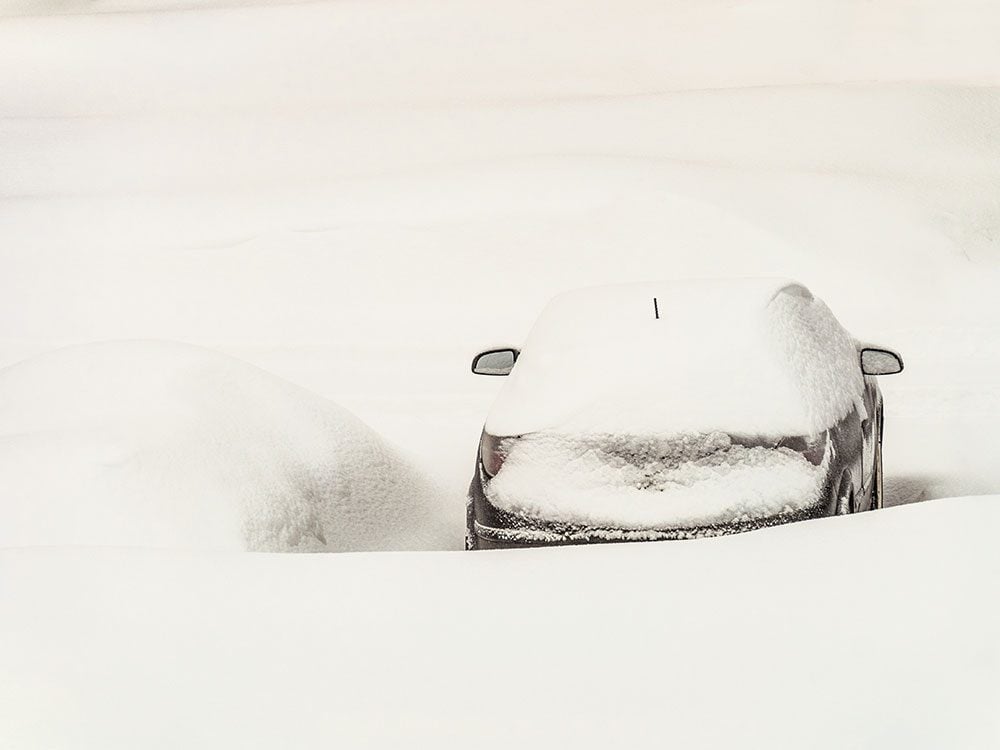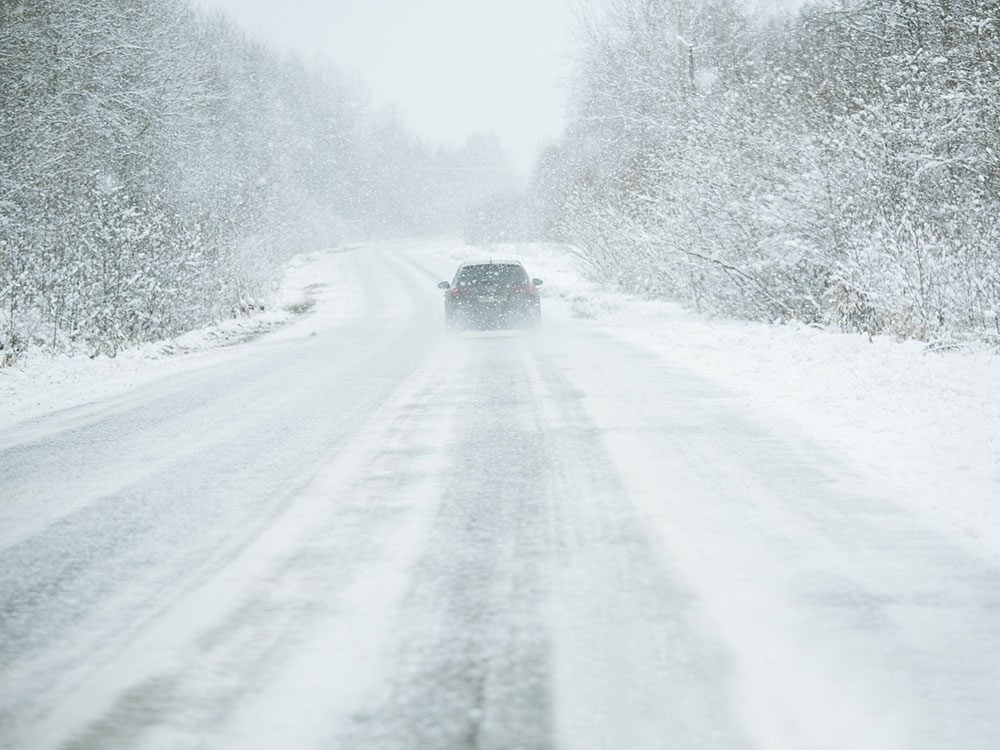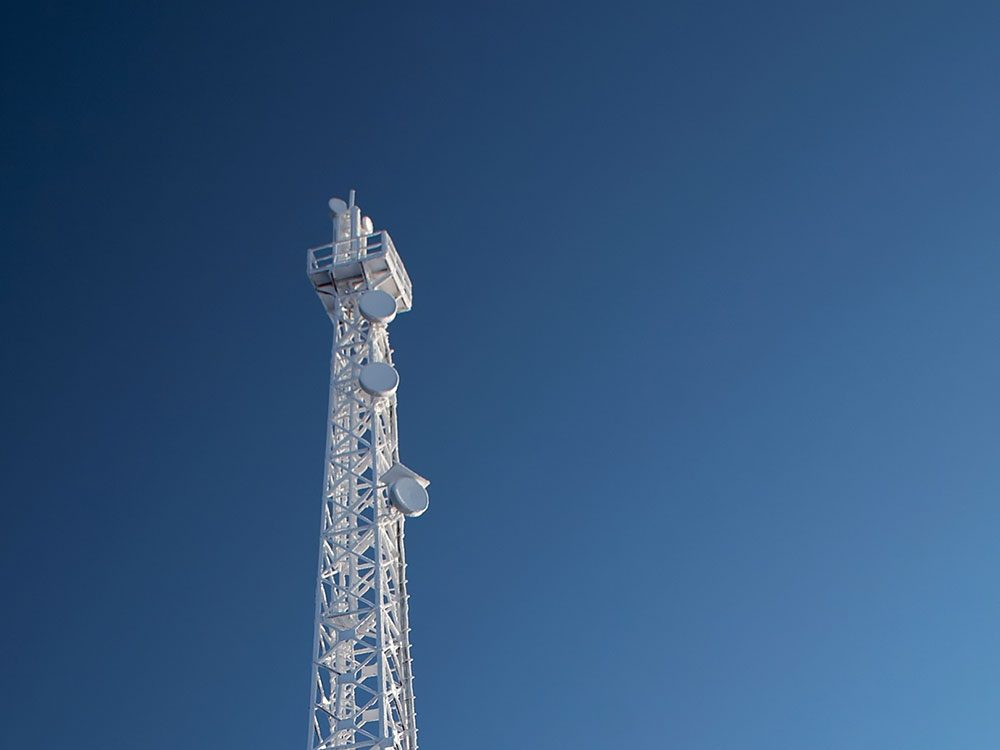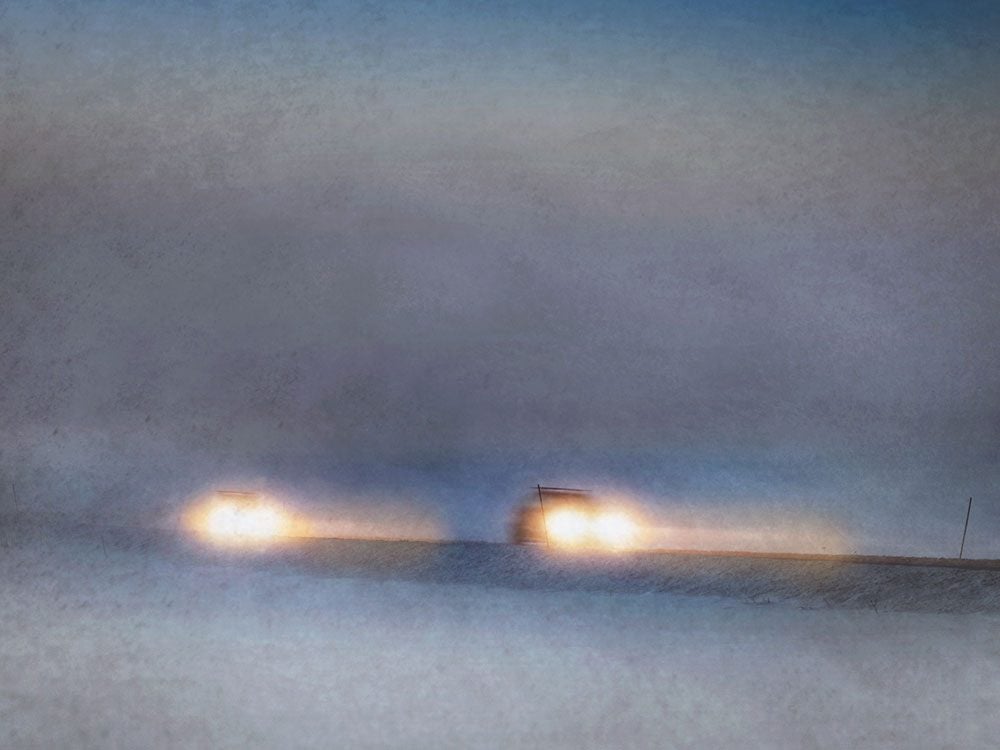
Manitoba Snowstorm: Waiting for Rescue
Exhaustion washed over Ernest Castel. Outside, the Manitoba snowstorm was still swirling, covering his Nissan SUV in a white blanket. For the past three nights, the 46-year-old addiction counsellor and his five companions had huddled in the vehicle, their sole sanctuary from the -40 C weather. It wouldn’t be a warm refuge for much longer—their gas had finally run out.
Now, just 50 kilometres from the town of Leaf Rapids but stranded on a snowbound northern Manitoba road, Castel’s strength was ebbing. That morning, he and his brother, John Linklater, had left the safety of the SUV and set out on a gruelling trek for help. With no cell service available on the isolated road, they had to find another way to contact the outside world.
They’d trudged through waist-deep snow for hours, searching for a communication tower they were sure was a few kilometres up from their vehicle on the buried Provincial Road 391. They’d eventually found the tower, which had a phone, allowing them to reach the RCMP. But by the time they’d returned to the SUV to wait for rescue, night was falling. The brothers crawled back inside, aching and soaked with sweat. For over an hour, Castel had sat bundled in his parka but still shivering.
He wasn’t shivering anymore—and that worried him. When the body’s core temperature drops, it shakes urgently as it fights to regain heat. If the shivering stops, that can mean the hypothermia is moving into a much more dangerous phase. Castel looked over at Linklater, hunched in the passenger seat beside him. His brother wasn’t shivering either.
In the back of the SUV, the four other passengers quietly listened to music on an iPad. There was Marie Colomb, Castel’s mother, who had stuffed plastic bags between her feet and her boots in a desperate effort to ward off the cold. And there was the trio they’d come across in another stranded vehicle: Castel’s nephew, Gordon Colomb; Gordon’s girlfriend, Nicole Dawn Halkett; and their friend Corey Hart.
Outside the SUV’s windows, darkness loomed. It all seemed so peaceful, Castel thought, and he was so sleepy. He fought to stay awake, knowing that sleeping while hypothermic can be deadly, but his eyelids were so heavy.
As sleep took hold, Castel turned to Linklater. “Well, brother,” Castel said. “It’s been good.” Beside him, Linklater stirred. “Yes, brother,” he replied. “It’s been good.” Then they closed their eyes, not knowing if they would open them again.
Read “A Deadly Snowstorm” for the tale of the hundreds of motorists stuck in an Ontario blizzard in 2010.

Manitoba Snowstorm: Departing from Winnipeg
The trip had started gently enough. That Monday—March 6, 2017—had dawned crisp and clear in Winnipeg, the snow on the ground already melting. Castel, who lives in the town of Lynn Lake, more than 1,000 kilometres northwest of Winnipeg, had been visiting the city with his partner, Alma Hart, and their four-year-old son, Wapaskokimaw.
Now they were preparing for the trip home, with a stop to drop off Linklater and Colomb at their place on Marcel Colomb First Nation, near Lynn Lake.
Before heading out, Castel consulted the Weather Channel: a storm was blowing across Saskatchewan toward Manitoba. Castel frowned. The journey would be long. To get back to Lynn Lake, the family was looking at a 13-hour drive, some of it over roads pitted with massive potholes. “If we’re going to leave, we’ve got to go now,” he said.
So just past noon, the group piled into the SUV and struck out from Winnipeg. For hours they pressed north, watching as the skies grew grey and the beginnings of a Manitoba snowstorm began to billow across the road. “We better start praying the weather stays in Saskatchewan,” Castel told his companions.
But the blizzard kept rolling in. By the time the group reached the city of Thompson, roughly 760 kilometres north of Winnipeg, the snow was coming down in thick white sheets, buffeting the few vehicles crawling along. Castel, worried they wouldn’t beat the storm, urged his partner to stay with their son in Thompson, where it would be safer. Then he, Linklater and Colomb bought coffee and plodded on.
The northern reaches of Manitoba are wild and beautiful, studded by splayed lakes and vast, scraggly forests. But Castel could see little of what lay beyond his vehicle; the blizzard was blotting out the scenery. As they drove away from Thompson, knee-high snowdrifts reached halfway over the road, and snow burst up from the SUV’s tires.
The three of them debated whether they should turn back. At first, Castel was tempted, but a voice in his head chimed. “Keegach,” it said in Cree. “Keep going.”
Over the years, Castel had come to trust that voice as a guardian angel. On they went.
Read “Drama in Real Life: This Father and Son Climbing Trip Went Horribly Wrong” for another amazing terrifying near death experience!

Manitoba Snowstorm: Buried in the Blizzard
Soon the road vanished under snow, leaving just a wagon trail of tire tracks ahead. As Castel made his way around a corner, beams cut through the sky: tail lights. Drawing closer, he spotted a truck—a two-wheel drive—stuck in a massive snowdrift. Beside the vehicle, a young man was trying to tunnel free, but every time he lifted his shovel the snow filled right back in.
Castel recognized the shoveller as Corey Hart, a fellow resident of Lynn Lake. Inside Hart’s truck were Gordon and Halkett. They had been picking up groceries in Thompson and were dressed lightly, ill prepared for the storm.
There was no question Castel would stop to help. That’s not just a courtesy in the North during a Manitoba snowstorm, it’s a matter of survival. Castel guided his SUV in front of the wedged truck and tried to create a trail Hart could follow. For an hour, they dug and pushed at the truck, attempting to work it free. At last they succeeded and began inching up the road.
It was pitch black by now, nearly midnight. The vehicles moved slowly through the drifts, Castel’s four-wheel drive cutting a path and Hart’s truck following in its wake. Every few kilometres the truck would hit a dip and sink into the snow, and Castel and Linklater would jump out to help shovel them free. Then they would press ahead just a little more.
Finally they could go no further—snowdrifts over a metre high rose across the road. Castel took stock of the situation: they were near the Suwannee River, he suspected, and he knew there was a communication tower there that might have a land line. Nearby, a sign proclaimed just 50 kilometres to Leaf Rapids, where there would be road crews, an RCMP detachment and help.
“All right,” Castel said. “I guess this is where home’s going to be.”
Hart, Gordon and Halkett clambered into the SUV. Castel kept the engine running for heat and dug out the bag of extra clothing—socks, sweaters, jackets—he kept in the vehicle for emergencies. Beyond the road, slender aspens, bent by the shrieking wind, blended into the shadows.
This isn’t so bad, Castel thought. They had a little food: a few bags of candy and some fried chicken Hart had bought in Thompson. For Castel and Linklater, who are diabetic, it would be enough to sustain them if they were careful. As for gas, there was an extra jerry can in the back.
He could see there was dry wood in the bush nearby in case they needed to start a fire. The group sipped on soda and lukewarm coffee, then hunkered down for the night and fell asleep to the purr of the SUV’s engine.
To avoid your own blizzard crisis, check out the 15 Winter Driving Rules Every Car Owner Should Know!

Taking Shelter From the Manitoba Snowstorm
When Castel awoke on Tuesday morning, the wind was still furiously whipping the snow. He heard the three younger people talking, predicting that road crews would arrive to clear the snow soon. “Not today,” Castel said; he knew help wouldn’t come while the blizzard was still raging. He wasn’t particularly worried, but it was never too early to start thinking about a Plan B.
Castel and Linklater bundled up to explore beyond the confines of the truck. As soon as they stepped off the road, they sunk up to their waists. For a minute, Castel thought it might be a good spot to build a quinzhee—a dugout in the snow—to serve as an emergency refuge when the SUV ran out of gas. But he worried that Colomb, in her 60s and suffering from stiff joints, wouldn’t be able to crawl in and out. Instead, the brothers set about constructing a lean-to shelter on a flat area.
Mostly, Castel believed it was important for their companions to see them working; it would alleviate feelings of helplessness while they waited for the road crews. Using a handsaw, the brothers felled some pine boughs and Castel’s thoughts drifted home, where he had five pairs of snowshoes. Those sure would be useful now, Linklater joked.
By the time the brothers finished the shelter and started a fire, darkness had returned. The wind was still howling, but Castel wasn’t afraid. Fear makes you do stupid things; that’s what his father had taught him when he was a child. Once you panic, you’ll probably do something foolish, and maybe you’ll die.
So the brothers calmly clambered back into the SUV, now running on a quarter tank of gas. The second night in the Manitoba snowstorm ticked by.
On Wednesday morning, Castel knew they were in trouble. The road was still piled with snow. Back in Thompson, Alma Hart was frantic, messaging everyone she knew to find help. But Castel wasn’t aware of that; without cell service, there was no way to contact anybody.
For another chilling tale of survival, read “Drama in Real Life: Polar Expedition Gone Horribly Wrong“!

Manitoba Snowstorm: Making Contact
The communication tower wasn’t far from where they were stranded, so Castel and Linklater set out, breaking a trail around the drifts. It was slow going. The snow was up to their knees, sometimes higher.
At last, after four hours of trudging, the brothers finally reached their destination. They cheered, then used crowbars they’d brought from the SUV to pry the tower’s doors open. Inside they found precious supplies—bottles of water and instant noodles—and two phones. They used one to dial out, then the other, but the calls kept dropping.
Finally, as Castel was poking around the tower’s bathroom, he heard Linklater talking. His brother had managed to connect a call to 611, a hotline for cellphone repair services. Castel jumped in. “We’re stuck on the highway, 50 kilometres south of Leaf Rapids,” Castel told the man at the end of the line.
The 611 agent patched in 911, and Castel explained the situation again. The 911 operator promised to send an emergency crew to rescue them, then connected them with the RCMP detachment in Leaf Rapids. “Send somebody with gas, on a snow machine if you can,” Castel said, thinking they could at least refill the SUV’s tank.
With their mission accomplished, Linklater and Castel prepared to head back to their group. The communication tower was warm, but they didn’t want the others to worry. On a piece of paper, Castel scribbled a note to Manitoba Telecom Services. “Thank you for your help,” it read. “Sorry for breaking your doors.”
By then it was late afternoon. The wind had started to die down, but already the trail they had made was filled in. The brothers trudged back the way they came, another four hours through the snow. “Come on, brother,” Castel said. “Keegach, keep going.”
For another story of stranded survivors from our archives, read “Drama in Real Life: 40 Hours Lost at Sea“!

Staying Alive in the Manitoba Snowstorm
A shock swept through Castel’s body at 3 a.m. on Thursday, March 9, jolting him. It was as if his body was fighting to wake him, a last-ditch attempt to keep him alive. Castel began to move around, feeling blood rush through his veins.
Castel nudged Linklater. “Start tensing your muscles, brother,” he told him. They sat there, flexing, until suddenly they began shivering again. Castel flushed cold, then hot, but felt better than he had the night before. He nudged his brother. “Close one, eh?” The men looked at each other and laughed.
Dawn was breaking over northern Manitoba. Castel lay half-awake, willing the rescue crews to come. At around 7 a.m. he heard a low rumbling that sounded like distant engines; as it grew closer, the SUV began to shake. It was, Castel thought, the most beautiful noise he’d ever heard. Then he saw the headlights: one pair, then two, then more.
A front-end loader cut through the snowdrifts, with a series of vehicles lumbering behind. Castel jumped out of the SUV and helped his mother and the three younger passengers into an RCMP vehicle. He and his brother then hopped in one of the road crew’s trucks.
It turns out they hadn’t been the only ones stranded in the Manitoba snowstorm. Just a few kilometres up the road, another truck had also been trapped: three sled-dog mushers with a team of 28 dogs. The animals, adapted to extreme northern weather, had spent the night snugly in their kennels. The owners had brought four members of the team into their vehicle’s cab for warmth.
Nine people had been stranded for 60 hours on Provincial Road 391. All of them survived.
Castel’s life has since returned to normal, but the blizzard has not been forgotten. Everywhere he goes, people ask him to tell the story.
There are lessons here, too. On one hand, Castel knows, none of this would have happened if he hadn’t tried to beat the storm. On the other, if he hadn’t driven past Thompson, they wouldn’t have been able to help Hart, Gordon and Halkett. “I’ve thought about that quite a bit,” says Castel. “That’s probably why that little voice told me to keep going.”
To learn how to be the hero in your own life, read “Survive Basically Anything: 20 Fixes for Life-Threatening Problems and Daily Hassles“!